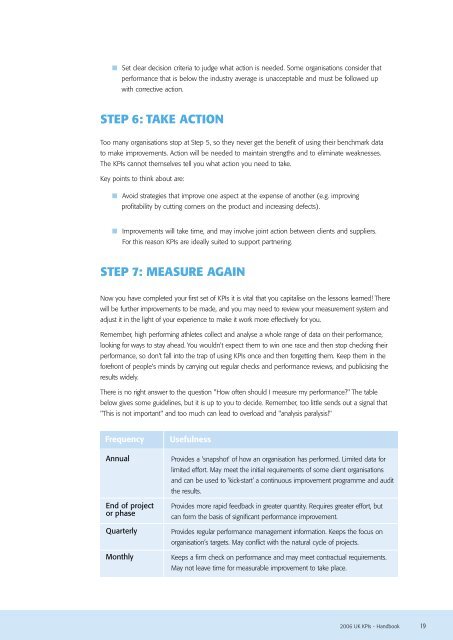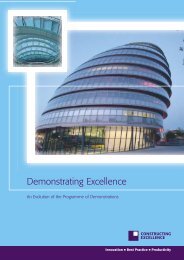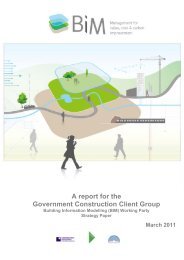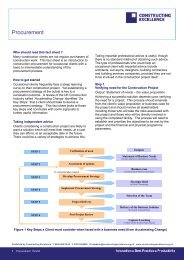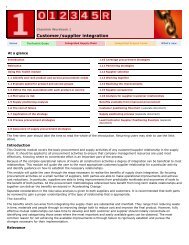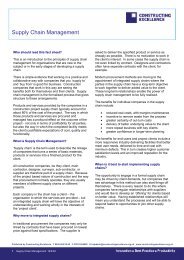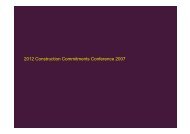Download - Constructing Excellence
Download - Constructing Excellence
Download - Constructing Excellence
- No tags were found...
You also want an ePaper? Increase the reach of your titles
YUMPU automatically turns print PDFs into web optimized ePapers that Google loves.
Set clear decision criteria to judge what action is needed. Some organisations consider thatperformance that is below the industry average is unacceptable and must be followed upwith corrective action.STEP 6: TAKE ACTIONToo many organisations stop at Step 5, so they never get the benefit of using their benchmark datato make improvements. Action will be needed to maintain strengths and to eliminate weaknesses.The KPIs cannot themselves tell you what action you need to take.Key points to think about are:Avoid strategies that improve one aspect at the expense of another (e.g. improvingprofitability by cutting corners on the product and increasing defects).Improvements will take time, and may involve joint action between clients and suppliers.For this reason KPIs are ideally suited to support partnering.STEP 7: MEASURE AGAINNow you have completed your first set of KPIs it is vital that you capitalise on the lessons learned! Therewill be further improvements to be made, and you may need to review your measurement system andadjust it in the light of your experience to make it work more effectively for you.Remember, high performing athletes collect and analyse a whole range of data on their performance,looking for ways to stay ahead. You wouldn't expect them to win one race and then stop checking theirperformance, so don't fall into the trap of using KPIs once and then forgetting them. Keep them in theforefront of people's minds by carrying out regular checks and performance reviews, and publicising theresults widely.There is no right answer to the question "How often should I measure my performance?" The tablebelow gives some guidelines, but it is up to you to decide. Remember, too little sends out a signal that"This is not important" and too much can lead to overload and "analysis paralysis!"FrequencyAnnualEnd of projector phaseQuarterlyMonthlyUsefulnessProvides a 'snapshot' of how an organisation has performed. Limited data forlimited effort. May meet the initial requirements of some client organisationsand can be used to ‘kick-start’ a continuous improvement programme and auditthe results.Provides more rapid feedback in greater quantity. Requires greater effort, butcan form the basis of significant performance improvement.Provides regular performance management information. Keeps the focus onorganisation’s targets. May conflict with the natural cycle of projects.Keeps a firm check on performance and may meet contractual requirements.May not leave time for measurable improvement to take place.2006 UK KPIs - Handbook 19


